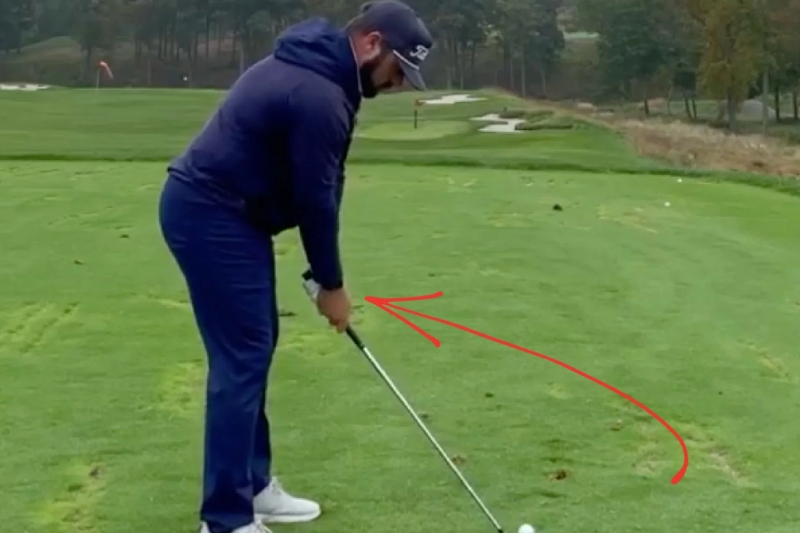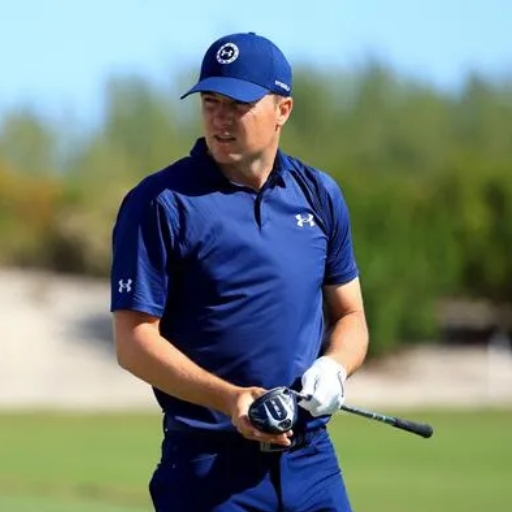Hitting a golf ball further is a common goal for golfers of all skill levels. Whether you’re a beginner looking to gain distance or an experienced player aiming to fine-tune your game, understanding the key elements that contribute to a powerful shot is essential. From mastering the basics of your stance and swing to exploring advanced techniques and equipment choices, there are various strategies you can employ to increase your distance off the tee. In this guide, we’ll share you how to hit a golf ball further, include some tips and techniques for maximum distance.
Understanding the Physics of Distance

To hit a golf ball further, we need to consider three critical factors: initial velocity, initial angle of flight, and spin.
Initial Velocity
The initial velocity is the speed at which the ball leaves the clubhead upon impact. This speed is primarily determined by the clubhead speed and the quality of the strike. A faster swing typically translates to a faster ball speed, leading to increased distance.
Initial Angle of Flight
The angle at which the ball is launched into the air is crucial for maximizing distance. A higher launch angle can help achieve greater carry, but too much loft can lead to excessive spin, which may reduce distance. Finding the right balance is key.
Spin
Spin affects how the ball travels through the air. Backspin can help lift the ball, but too much can lead to a loss of distance. Conversely, sidespin can cause hooks or slices, which can also affect distance.
How to Hit a Golf Ball Further: Tips and Techniques for Maximum Distance

Now that we understand the physics, let’s dive into practical tips that can help you hit the ball further.
Improve Your Swing Technique
Focus on Center Contact
Hitting the ball with the center of the clubface is essential. Off-center hits can lead to significant distance loss. Use impact tape or foot powder to identify where you’re making contact on the clubface and adjust your stance accordingly.
Practice Your Swing Speed
Increasing your swing speed can lead to greater distance. However, it’s important to maintain control. Start by practicing with a lighter club or a swing speed training device to build up your speed gradually.
Optimize Your Equipment
Choose the Right Driver
The driver is your primary tool for distance. Ensure you have a driver that suits your swing speed and style. A club fitting session can help identify the best specifications for your game.
Adjust Your Loft
Experiment with the loft of your driver. A lower loft can help achieve a more penetrating ball flight, while a higher loft can assist with launch angle.
Strength and Flexibility Training
Core Strength
A strong core is vital for generating power in your swing. Incorporate exercises like planks, Russian twists, and medicine ball throws into your fitness routine.
Flexibility Exercises
Improving your flexibility can enhance your range of motion, allowing for a more powerful swing. Consider yoga or dynamic stretching as part of your warm-up routine.
Proper Ball Position
Position the Ball Forward
For maximum distance, position the ball slightly forward in your stance. This allows for an upward strike on the ball, promoting a higher launch angle and less spin.
Tee It High
Experiment with Tee Height
Teeing the ball higher can help you achieve a better launch angle and reduce spin. Find the optimal height that allows you to strike the ball cleanly while maximizing distance.
Mental Approach
Visualize Your Shot
Before each swing, take a moment to visualize the shot you want to hit. A positive mental approach can help you relax and execute your swing more effectively.
Consistent Practice
Track Your Progress
Keep a log of your driving distances during practice sessions and rounds. This will help you identify what works and what needs improvement.
Dedicated Practice Sessions
Set aside time to focus solely on your driving. Use drills that emphasize speed and accuracy to build muscle memory.
Additional Factors to Consider

The Role of Equipment
Golf Ball Selection
Different golf balls are designed for various swing speeds and styles. A ball that matches your swing can help maximize distance.
Club Maintenance
Ensure that your clubs are in good condition. Worn grips or damaged clubheads can negatively impact your performance.
Environmental Considerations
Wind and Elevation
Be aware of environmental factors like wind and elevation. Playing in high-altitude areas can lead to increased distance due to thinner air.
Course Conditions
Wet or dry conditions can affect how far the ball rolls after landing. Adjust your strategy based on the conditions of the course.
Conclusion
Hitting a golf ball further involves a combination of proper technique, physical fitness, the right equipment, and mental focus. By implementing these strategies, you can add valuable yards to your drives and enjoy your time on the course even more.
FAQs
- What is the most important factor in hitting a golf ball further?
The most important factor is achieving center contact on the clubface, as this maximizes energy transfer and distance.
- How can I increase my swing speed?
Incorporate strength training and flexibility exercises into your routine, and practice swinging with a lighter club to build speed.
- Does tee height affect distance?
Yes, teeing the ball higher can help achieve a better launch angle and reduce spin, leading to increased distance.
- Should I change my golf ball to hit further?
Using a golf ball that matches your swing speed and style can help maximize distance. Consult with a professional for recommendations.
- How often should I practice to see improvements?
Consistency is key. Aim for at least one dedicated practice session per week focused on driving distance, along with regular play.

I am the owner of Ricks Golf Shop, a popular destination for golf enthusiasts. My passion for golf began in my teenage years and has only grown over the years. With over 10 years of experience in the golf industry, I offer expert advice and quality products. With a friendly demeanor and extensive knowledge, I ensure every customer leaves happy.
